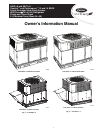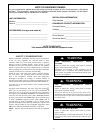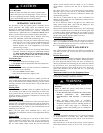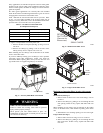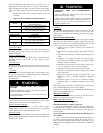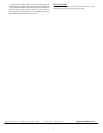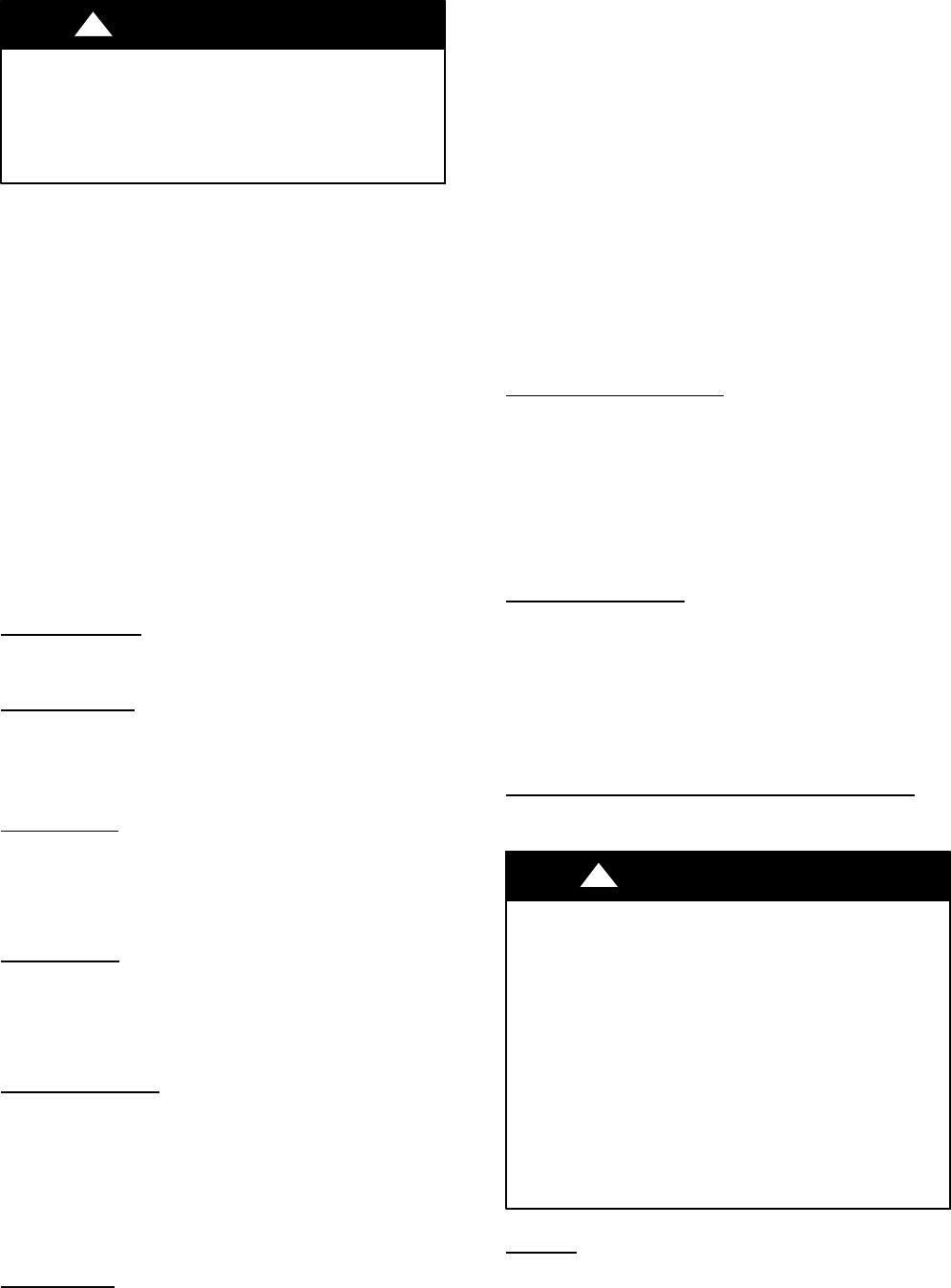
3
CUT HAZARD
Failure to follow this caution may result in personal injury .
Sheet metal parts may have sharp edges or burrs. Use care
and wear appropriate protective clothing, safety glasses and
gloves when handling parts and servicing furnaces.
!
CAUTION
OPERATING YOUR UNIT
The operation of your heat pump system is controlled by the
indoor thermostat. You simply adjust the thermostat and it
maintains the indoor temperature at the level you select. Most
thermostats of heat pump systems have 3 controls: a temperature
control selector, a FAN control, and a SYSTEM or MODE control.
Refer to your thermostat owner’s manual for more information.
To better protect your investment and to eliminate unnecessary
service calls, familiarize yourself with the following facts:
1. During heating, increasing the desired temperature setting
more than 2°F(1.1°C) may cause the supplemental heaters
to be turned on for a short period of time to satisfy the
demand. Needless use of the supplementary heat reduces
potential energy savings.
2. Ice or frost tends to form on the c oil during winter heating
operation. Your unit is designed to automatically melt the
ice. When in this defrost cycle, it is normal for steam or
fog to rise from the outdoor unit, and for water to drain
from the outside of unit. Do not be alarmed!
To start the unit:
1. Turn on the electrical power supply to unit.
2. Set MODE control to desired mode and select temperature.
To shut off unit:
NOTE: If the unit is being shut down because of a malfunction,
call your dealer as soon as possible.
1. Set system MODE control to OFF.
2. Turn off the electrical power supply to unit.
Cooling Mode
With the SYSTEM or MODE control set to COOL, your unit will
run in cooling mode until the indoor temperature is lowered to the
level you have selected. On extremely hot days, your unit will run
for longer periods at a time and have shorter “off” periods than on
moderate days.
Heating Mode
With the SYSTEM or MODE control set to HEAT, your unit will
run in heating mode until the room temperature is raised to the
level you have selected. Of course, your unit will run for longer
periods to maintain a comfortable environment on cooler days and
nights than on moderate ones.
Supplemental Heat
Your unit is your primary heating source. Your system may also be
equipped with a supplemental heating source such as electric heat.
On cold days and nights, your system will automatically turn on
the supplemental heat, as needed, in order to maintain the level of
comfort you have selected.
When your heat pump needs additional heat to keep you
comfortable your thermostat will turn on the supplemental heat (if
equipped).
Defrost Mode
When your unit is providing heat to your home or office and the
outdoor temperature drops below 45°F(7.2°C), moisture may
begin to freeze on the surface of the coil. If allowed to build up,
this ice would impede airflow across the coil and reduce the
amount of heat absorbed from the outside air. So, to maintain
energy--efficient operation, your unit has an automatic defrost
mode.
The defrost mode starts at a preset time interval of 60 minutes,
although, it may be reset to 30, 90 or 120 minutes. Defrost will
start at the preset time only if the ice is sufficient to interfere with
normal heating operation.
After the ice is melted from the coil, or after a maximum of 10
minutes in defrost mode, the unit automatically switches back to
normal heating operation.
Do not be alarmed if steam or fog appears at the outdoor unit
during defrost mode. Water vapor from the melting ice may
condense into a mist in the cold outside air.
During certain weather conditions such as heavy snow and freezing
rain it is not uncommon for ice to build up on the unit grille. This
is normal for these weather conditions. Do not attempt to remove
the ice from the unit grille. This condition will not affect the proper
function of the unit and will clear within a few days.
Emergency Heating Mode
In the event of primary unit heat failure, the emergency heat mode
allows your supplemental heating source to keep your home or
office warm until your unit can be serviced. Contact your dealer in
the event of primary unit heat failure.
MAINTENANCE AND SERVICE
This section discusses maintenance that should be performed by
your dealer and care you, as the owner, may wish to handle for
your new unit.
Routine Maintenance
All routine maintenance should be handled by skilled, experienced
personnel. Your dealer can help you establish a standard procedure.
To assure proper functioning of the unit, flow of condenser air
must not be obstructed from reaching the unit. Clearance from the
top of the unit is 48 in. (1219 mm). Clearance of at least 36 in.
(914 mm) is required on sides except the power entry side (42 in.
[1067 mm] clearance) and the duct side (12 in. [305 mm]
minimum clearance).
Maintenance and Care for the Equipment Owner
Before proceeding with those things you might want to maintain
yourself, please carefully consider the following:
FIRE, EXPLOSION, ELECTRICAL SHOCK, CUT
HAZARD
Failure to follow this warning could result in personal
injury, death or property damage.
1. TURN OFF ELECTRICAL POWER TO YOUR UNIT
BEFORE SERVICING OR PERFORMING
MAINTENANCE AND INSTALL A LOCK--OUT
TAG.
2. When removing access panels or performing
maintenance functions inside your unit, be aware of
sharp sheet metal parts and screws. Although special care
is taken to reduce sharp edges to a minimum, be
extremely careful when handling parts or reaching into
the unit.
!
WARNING
Air Filters
The air filter(s) should be checked every 3 or 4 weeks and changed
or cleaned whenever it becomes dirty. Dirty filters produce
excessive stress on the blower motor and can cause the motor to
overheat and shut down.
This unit must have an air filter in place before it can be operated.
These filters should be located in at least one of two places. In



